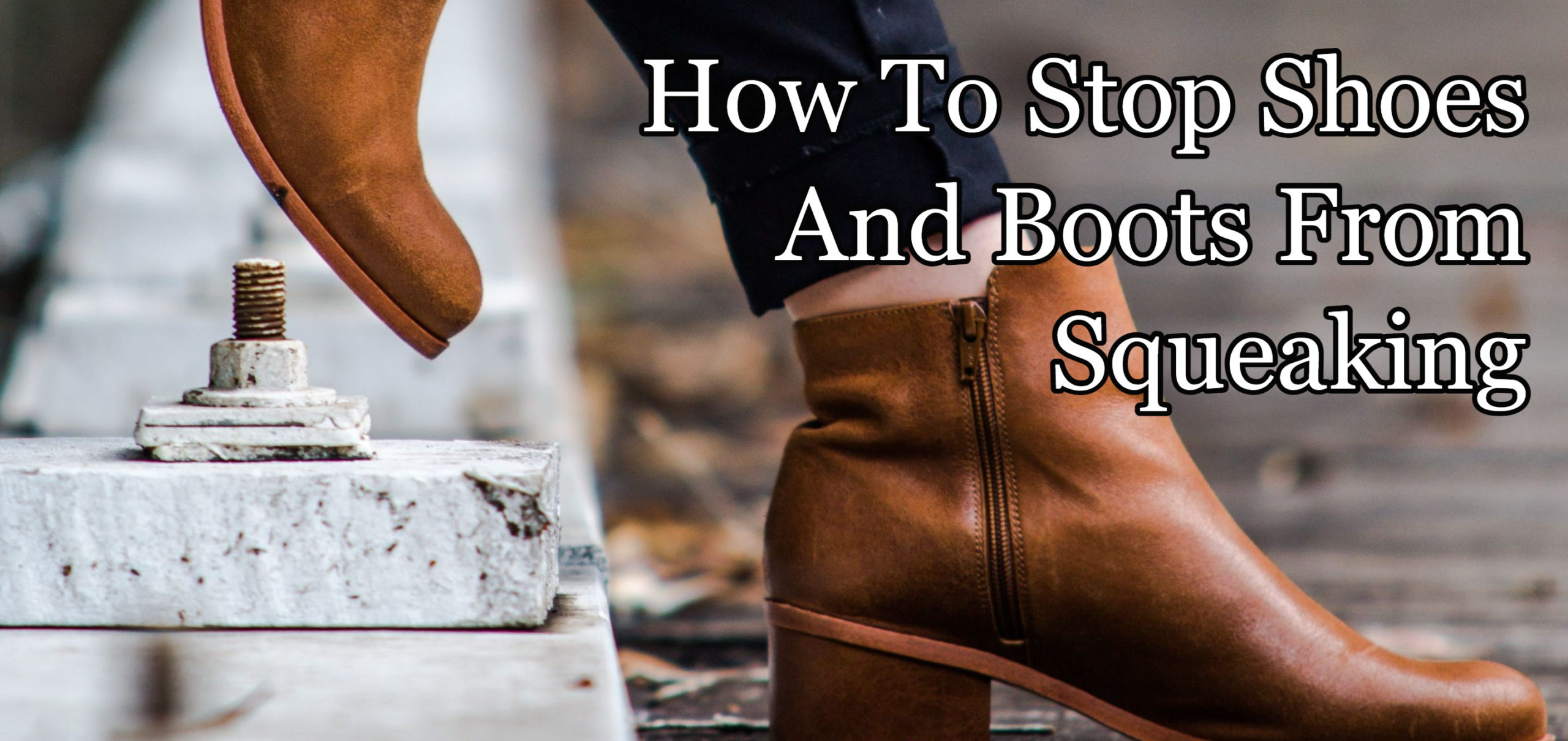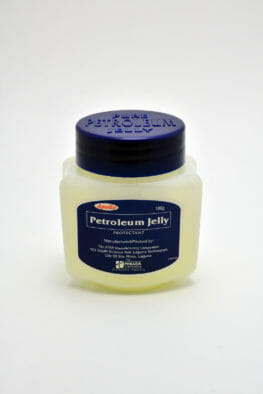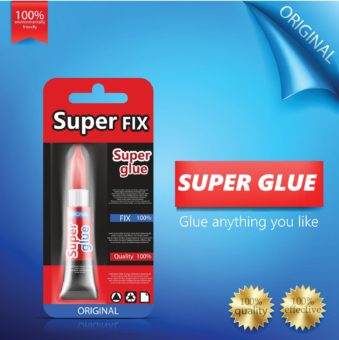
No matter how gently you put your foot down, the shoes squeak on tile, linoleum, and cement surfaces! Irritating! Frustrating! What causes squeaky shoes, and how can you stop boots and shoes from squeaking all the time? Is it the tongue, sole, insoles, heels, or a manufacturing defect? Is it okay for leather boots to squeak from time to time? The article will help you determine why your boots are squeaking and how to fix them.
Step One: Where IS The Squeak Coming From
Firstly, you need to determine which parts of the shoe or boot are squeaking. If you aren’t sure, ask someone to help you identify the source as you walk past the person or rock your feet back and forth and from side to side.
Old or new, shoes can squeak; these are the most common causes for that irritating squeak.
Why New Pair of Shoes Squeak
The two most common reasons for squeaky new shoes and work boots are
- Defective construction
- Smooth rubber soles on tiles and hard floors
- Leather shoes can squeak when flexing the foot, causing parts to rub together
Why Old Shoes Squeak
Wear and tear are often the reason for squeaking shoes and work boots.
- All workboot materials or shoe parts can cause friction when rubbing against each other
- Separation of materials or peeling of the front part of the shoe sole
- The secured heel loosens and separates
- Sole attached incorrectly
- Insoles fit incorrectly from wear
Water Damage And More
- Wet or moist soles from walking in the rain or on wet surfaces
- Insoles that absorb moisture will squeak when walking on hard floors
- Wrong lubrication used on insoles
- Shoelaces are too tight
Once you’ve determined the reason for the squeaking sound, you can focus on fixing the squeaking part of the shoes or boots; sometimes, you need to fix all of it. Check the various methods below on how to fix the problem.
Fix The Squeak Coming From The Insole Inside Of The Shoe
Squeaking noise from the insoles usually comes from wetness or friction. Here are some DIY tricks to remove all the noise inside squeaky shoes.

Petroleum Jelly
Applying a thin layer of petroleum jelly (e.g., Vaseline) under the shoe insole is a quick fix to prevent shoe parts from rubbing against each other.
Silicone Bags
Silica gel bags are great options for keeping moisture out of a pair of boots or shoes when you aren’t going to wear the footwear for a time. Storing silicone gel bags inside the shoes or boots will keep shoes dry and odor-free.
Replace Insoles
Excessive moisture can be challenging to remove from a wet insole. If the insole still squeaks after removing the excess, it is sometimes better to replace the damp insoles with new ones.
Super Glue Loose Insoles
A loose insole moving on the midsoles could be the reason for the squeaking noise. For a long-term fix, glue the insole to the inner side of the shoe with Super Glue.

Grease Insoles
Reduce the noisy traction by greasing the bottom of the insole with any greasing substance like coconut oil.
Boot Dryer
A boot dryer doesn’t harm boots and shoes as a hairdryer would. The light heat from good boot dryers will dry the boots and kill odor-causing bacteria, eliminating any odor problem from sweaty feet. You can insert some types of boot dryers inside the boot or shoe to dry the insides.
Simplest Fix For Noise: Ball Up Newspaper To Dry Out The Shoe
Put a bunched-up newspaper in your boot. You can use a paper towel or three in a pinch, but newspaper sheets are better (and cheaper). Rice or newspaper are excellent moisture absorbents that soak up the moisture on the inside of the shoe.
Avoid using a hairdryer or any other extensive heat that can damage the boots. The best way is to remove the insoles and laces, pull back the tongue, and air dry the footwear. Place the squeaky boots in a warm location like a laundry room to dry quickly; avoid direct sunlight. If you’re in a hurry and don’t have the time or patience to wait, the newspaper or rice will speed up the process. Drying shoes will stop the shoes from squeaking.
Talcum Powder Method Of Fixing Shoe Squeaks
Moist is often the culprit for squeaky shoes. Baby powder, baking powder, caustic soda, corn starch, or talcum powder absorbs the moisture from sweaty feet, drawing it away from the insole and shoe insides. Baby powder dries, removes odors, and reduces friction.
Sprinkle a layer of talcum or baby powder on the insoles and also under the insoles. By dusting the space underneath the insoles, the powder removes the friction caused by the insoles rubbing against the inner parts of the shoes, and the squeaking sound stops.
If the work boots have non-removable insoles, apply the powder to the edge of the shoe base to absorb the dampness that causes the shoes to squeak when two parts rub together. The shoes will stop squeaking when dry. Wait until the baby powder absorbed the wetness before removing it from the footwear; give the powder enough time to do its work.
Dryer Sheet Method For Squeak Elimination
The dryer sheet method is one of the easiest methods to eliminate squeaking noises when walking on flat surfaces like tile, wooden, or granite floors. Rub the bottom of the boot sole with a dryer sheet.
Pack paper towels or dryer sheets between the insole and inside of boots will also stop the squeaking.
If you don’t have a dryer sheet, you can always use the powder method (suggested above) on any parts of squeaking shoes or boots caused by friction or moisture.
Fix A Squeak Coming From The Sole Of The Boot Or Shoe
The rubber base of new work boots is too slick and without frictions which could be the reason for the squeaky noise when walking on a smooth surface. Often the squeaking disappears after wearing the pair of shoes or work boots for a while.
Dryer Sheets Or Fine Sandpaper
If you don’t want to wait, rub the rubber outsoles with a dryer sheet or fine-grit sandpaper to cause traction on the soles. Use 60 grit sandpaper for shoes with leather bottoms and 120-220 grit sandpaper for rubber sole boots or shoes.
Anti-Slip Spray for Rubber Sole
Spray the outsoles with rubber sole spray; the anti-slip feature causes traction that reduces the squeaking noise. Alternatively, use a home remedy mixture of three parts sunflower oil to one part water in a spray bottle or a blend of 90% vegetable oil with 10% acetone.
Water-Repellant Spray
Use a water-repellant spray like WD-40. WD-40 is a water-displacing spray for treating rubber and leather shoes. Spray a bit of WD 40 on a dry cloth, sponge, or cotton ball and apply to the outside seams of the shoes. Don’t apply it to suede fabrics; it can damage the footwear fabric permanently.
Repair With Glue Or Rubber Cement
Reduce traction by applying rubber cement to the shoe heels. Wait for it to dry before wearing the shoes or boots. The rubber cement or Super Glue also works to reattach broken shoe heels and soles. Clamp the shoes or use rubber bands to hold the pieces together while the shoe dries.
Another suggestion is repairing shoes with silicone caulk or silicone products for shoes.
Powder For Trapped Air
Air bubbles between the top and bottom parts of the boots or shoes can also cause a squeaky sound. Rub baby powder or talcum powder on the areas that squeak when walking on hard floors.
Shoe Conditioner
A shoe conditioner, waterproof wax treatment, boot lubricant, leather conditioner, or any shoe conditioning oil can stop squeaky noises coming from the boots or shoes. Make sure you use a shoe conditioner designed for the footwear material. Coat the boots or shoes with the conditioning oil; make sure you lubricate the patterns and creases.
If you don’t have any shoe conditioning oil or boot lubricant, you can try hair conditioning oil.
Is Your Squeak Coming From The Tongue and Laces?
The tongue or laces can rub against other parts of the work boots, dress shoes, or sneakers, causing the irritating squeaking noise.
- Check if the laces are too tight, causing friction; slacken the lace lightly should stop the squeaks.
- If the shoelaces rub against parts of a pair of leather shoes, you can fix the noise with saddle soap. Slightly moisture the laces with a bit of saddle soap.
- The powder method also works for shoelaces that rub against parts causing squeaky noise.
Step Two: Other Common Squeak “Gotchas”
Are These New Boots or Shoes?
Sometimes the squeaking noise is from a manufacturer’s defect. Before you do anything contrary to the warranty, return the boots or leather shoes to the store. The staff may advise on the reason for the squeaking and how to deal with the problem; if the source is unknown or a faulty pair of shoes, they will recommend exchanging or returning the shoes or boots.
Stretching the new work boots or shoes with your hands can loosen it enough for your feet to break in the shoes or work boot.
Is Your Footwear Wet?
If so, you need to deal with that first. Try one of the drying methods from step one again; even if you didn’t see dampness, it might be the invisible problem. Dampness is often the reason for squeaky shoes and the source challenging to locate.
Look For Imperfections – You May Need To Return or Repair
Older work boots and shoes wear and tear from use; these imperfections could be the reason for the squeaky shoes. If it isn’t easy to fix yourself, take the pair of shoes to a cobbler or shoe repair shop.
If it is a brand new pair of shoes or work boots that squeak because of imperfection, return the shoes or boots immediately to the store.
Other Commonly Asked Boot and Shoe Noise Questions
Why Do Your Leather Boots And Shoes Squeak?
How the leather boots or leather shoes’ upper section attaches to the bottom section could be why the boots squeak. A slight defect at the factory level can cause friction between leather parts, creating irritating squeaking sounds.
How To Stop Work Boots And Shoes From Squeaking On Hard Floors
If your boots transform into squeaky boots the moment you walk on hard and concrete floors at the site, it could be the non-slip rubber soles. The traction between the soles and tile, linoleum, or concrete floors causes the squeaks.
Apply dryer sheets, fine sandpaper, or any of the methods mentioned above. Avoid oily lubricants that make the shoe bottoms slippery, causing you to fall.
How To Stop Cowboy Boots From Squeaking?
Before fixing the problem, you need to determine the source and reason the cowboy boots squeak. New outsoles, tight instep, damp inside, poorly designed, loose heel, or dirty cowboy boots could all be reasons for squeaky boots. Powders, leather conditioning oils, or mink oil can stop the squeak; make sure you use leather products on leather and the correct products for suede. For a more comprehensive guide, follow the recommendations for squeaky footwear mentioned above.
When Should You Take Your Squeaky Shoes to a Cobbler?
Before you get rid of your favorite pair of dress shoes or boots, let the cobbler investigate the reason for the squeak and if it is fixable. Wear the squeaky footwear to the repair shop so that the shoemaker can determine the source of the squeak. If you can’t fix the squeak at home, take the squeaky shoes to a professional. A professional can often repair a broken heel, sole, shank, or other worn pieces that caused the squeaking.
How do you prevent your cowboy boots, work boots, and other footwear like dress shoes from squeaking? Do you have a step-by-step process for leather uppers, rubber soles, and other materials?

